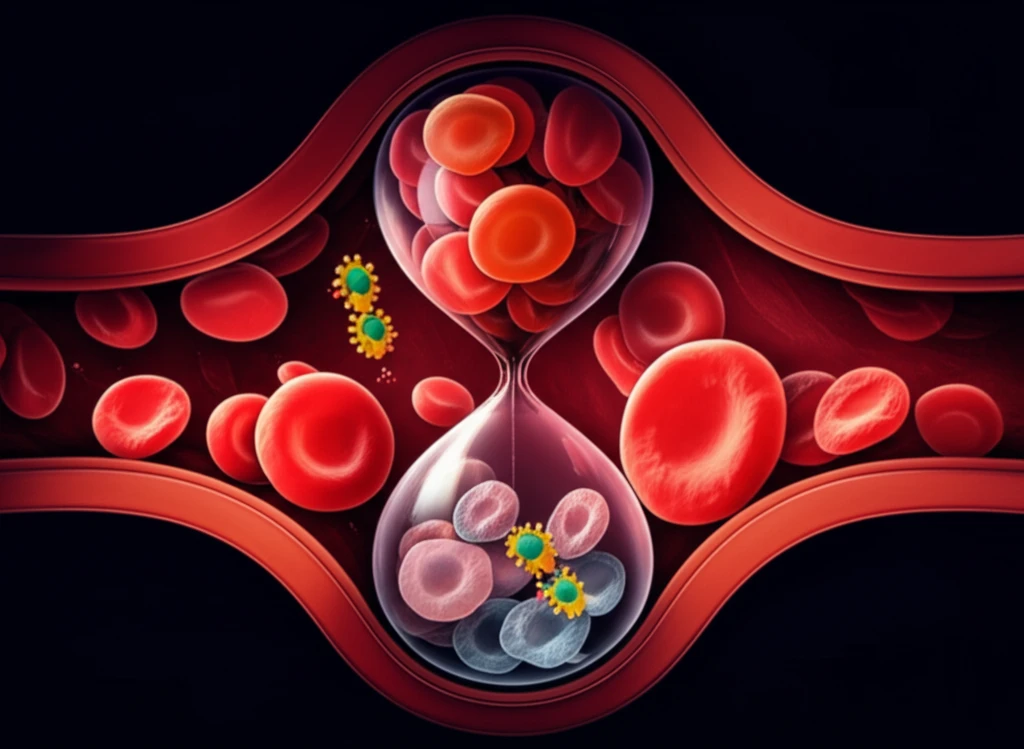
Could Arginase Be the Key to Slowing Down Aging and Obesity's Effects on Your Arteries?
"New research explores how arginase, an enzyme, impacts blood vessel health in obese individuals and how aging modulates this process."
Obesity is a widespread health issue linked to significant illness and mortality, largely due to its detrimental effects on the cardiovascular system. Obesity hastens the progression of atherosclerosis, triggering physiological changes that can be detected even in young adults. These changes closely resemble those typically seen with aging, underscoring the importance of understanding how obesity affects our bodies over time.
One of the earliest signs of vascular dysfunction in obese individuals is a reduction in nitric oxide (NO) availability. NO is crucial for maintaining vascular homeostasis and facilitating remodeling, a process that helps blood vessels adapt to changing conditions. The enzyme eNOS (endothelial NO synthase) is vital in producing NO, converting L-arginine into NO and L-citrulline. Reduced availability of L-arginine, the substrate eNOS uses, can impair NO production, leading to endothelial dysfunction.
Arginase, a manganese metalloenzyme, breaks down L-arginine into urea and L-ornithine. It exists in two isoforms, arginase I and II, both found in various tissues, including the cardiovascular system. Elevated arginase concentrations can cause eNOS uncoupling, reducing NO production and impairing endothelial function. Additionally, arginase may contribute to vascular remodeling, promoting inflammation and senescence in endothelial cells and supporting the proliferation of smooth muscle cells and collagen synthesis. Since both reduced NO availability and accelerated vascular aging are key factors in obesity-related vascular diseases, researchers are exploring the potential role of arginase I and II.
How Does Arginase Affect Blood Vessels in Obesity?

A study published in Arteriosclerosis, Thrombosis, and Vascular Biology investigated the role of arginase in small arteries of obese patients, examining its relationship with aging and microvascular remodeling. Researchers collected small artery samples from subcutaneous fat biopsies of both obese and non-obese participants. They then assessed endothelium-dependent vasodilation, a measure of blood vessel flexibility, using acetylcholine. These tests were conducted under various conditions, including the presence of L-NAME (an eNOS inhibitor), N(w)-hydroxy-nor-L-arginine (an arginase inhibitor), and gp91ds-tat (an NADPH oxidase inhibitor).
- Media-lumen ratio: A measure of blood vessel wall thickness.
- Vascular wall fibrosis: The amount of fibrous tissue in the vessel wall.
- Vascular superoxide anions and NO production: Indicators of oxidative stress and NO availability.
- Arginase expression: The amount of arginase in the vessel wall.
What Does This Mean for You?
This research highlights that arginase contributes to microvascular endothelial dysfunction in obesity, but its impact is reduced by aging due to higher levels of vascular oxidative stress. Obesity is also associated with accelerated microvascular remodeling, with the extent of remodeling linked to the amount of arginase in the vascular wall. These findings suggest that targeting arginase might be a valuable strategy for maintaining vascular health, especially in younger obese individuals.
